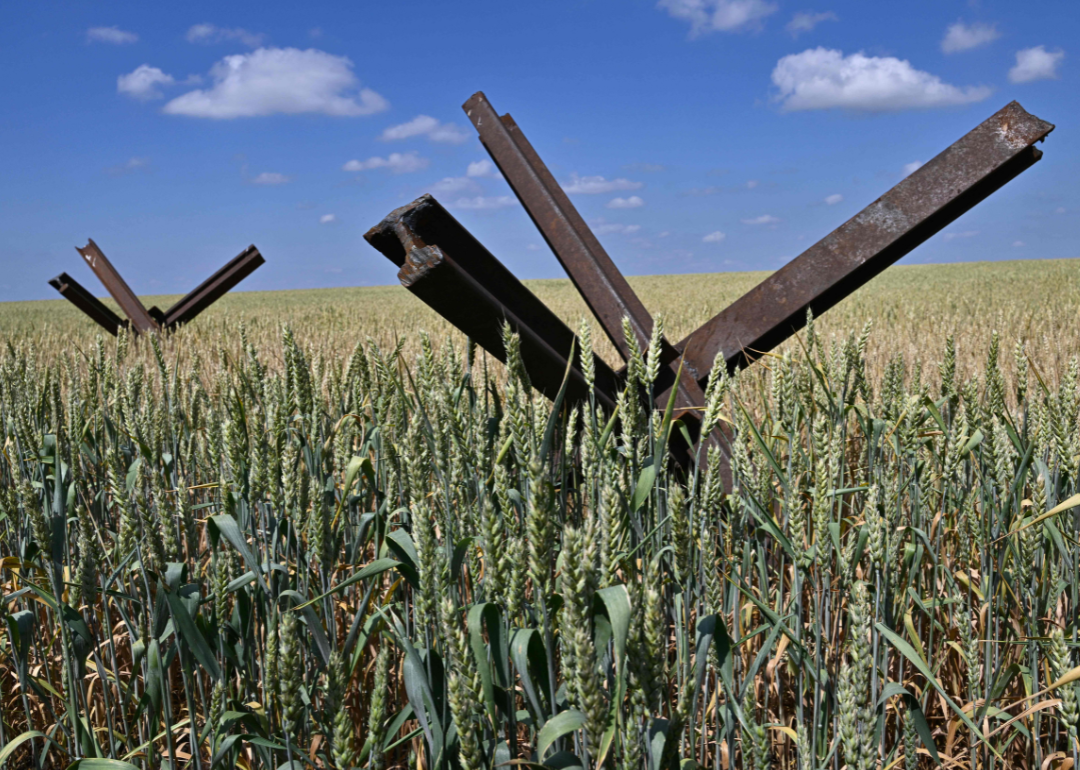
10 Strategic Commodities Impacted by the Russia-Ukraine War
10 Strategic Commodities Impacted by the Russia-Ukraine War
Inspired by the Yale School of the Environment's journal 360, Stacker looks at how the Russia-Ukraine war that began in early 2014 and escalated to a full-scale invasion on February 24, 2022 has impacted 10 important commodities the world needs for food, travel, and manufacturing.
The West's sanctions against Russia have disrupted global trade of key commodities used for food preparation and strategic metals vital to green manufacturing. "Russia's metals are vital for the electric cars, solar panels, smart grids, and wind turbines needed to tackle climate change," Yale Environment 360 explains.
Russia is now the most sanctioned country on Earth, but its vast territory and wealth of natural resources have made it much more difficult for the U.S. and its allies to economically isolate than smaller countries like Cuba, North Korea, or Iran. Moscow has also demonstrated some capability to retaliate. In early June, Russia reportedly struck back at sanctions designed to cut off the Russian military's access to computer chips by restricting exports of neon gas—a key component in the chip manufacturing process—to multiple countries.
Global food prices, which were already rising during the pandemic, have also proven volatile due to disrupted Ukrainian harvests from war-related shortages of agricultural workers drafted into the army and a lack of diesel and gasoline for farm vehicles. Compounding these problems is Ukraine's inability to ship its grains by sea due to Russia's naval blockade in the Black Sea, a war zone with floating Ukrainian mines.
Despite the U.S. State Department insisting that agricultural exports be exempt from U.S. and allied governments' sanctions, Russia blames U.S. sanctions and Ukraine's sea mines for scaring off maritime insurers. Washington has also warned that Russia is likely stealing Ukraine's harvested grain and exporting it to countries in Africa and the Middle East.
As the Russia-Ukraine war exacerbates worldwide supply-chain woes, Stacker looks at 10 important commodities and how potential shortages of these raw materials are impacting the global economy, from farmers' markets to chip fabs. Since Ukraine is not a major oil and gas producer, the emphasis of the list is on commodities that both Russia and its neighbor produce that are impacted by war and sanctions.
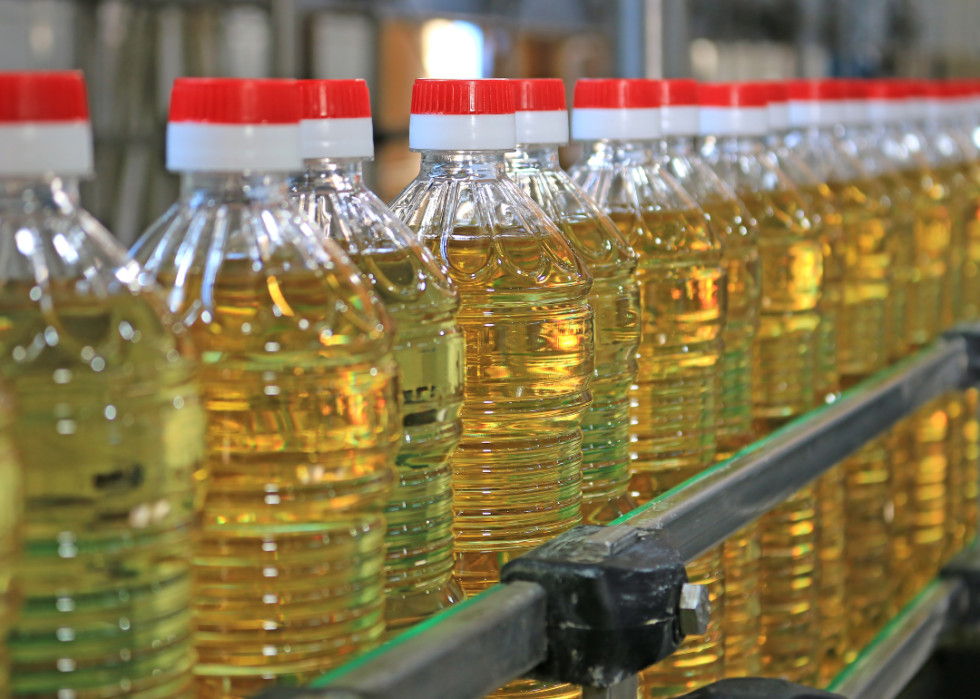
Sunflower oil
The sunflower is Ukraine's national flower.
Ukraine leads the world in sunflower oil exports, and its major customers have included historically food insecure countries in the Middle East, Africa, and South Asia. In March 2022, prices per metric ton of sunflower oil increased 58% month over month to $2,361 prompting European supermarkets to limit purchases to one bottle or jar per customer. As of June, the USDA's Foreign Agricultural Service projects that Ukraine's sunflower seed production would drop by nearly half this year compared to 2021.
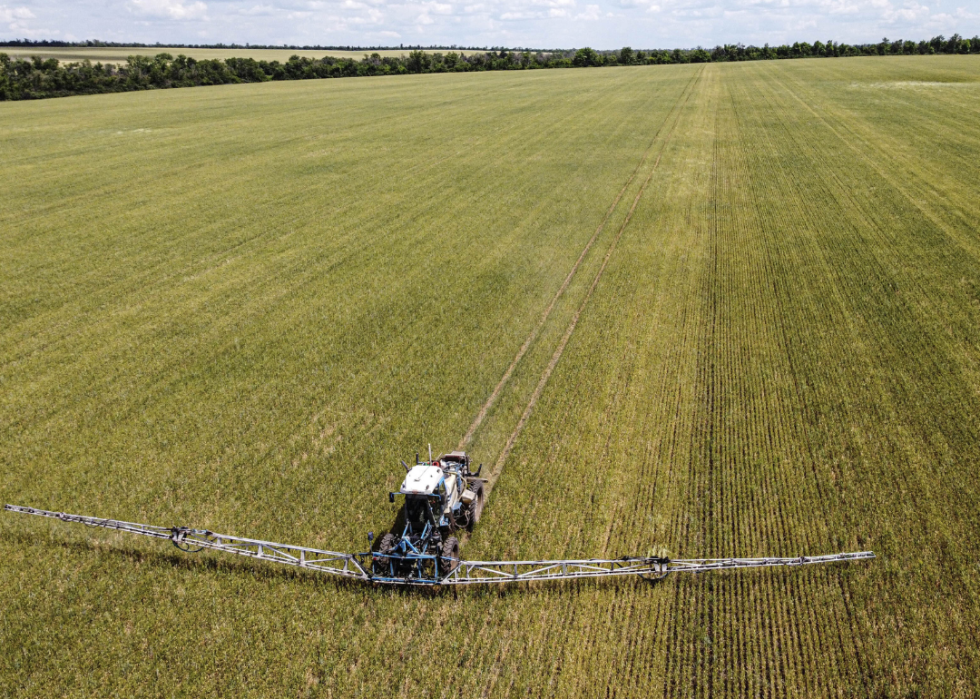
Wheat
In 2021, Ukraine was the fourth-largest combined exporter of grains worldwide behind the U.S., Argentina, and Russia; and wheat prices were going up well before February 2022. The USDA's Foreign Agricultural Service reported in April 2022 that wheat prices had climbed 110% over the preceding 18 months.
As with sunflower seeds and oil, Ukraine previously shipped wheat in bulk by barge down the Dnieper River to the Black Sea. Prior to the February invasion, 89% of Ukraine's grain exports were shipped via Black Sea ports. But the war has disrupted trade not only by sea, but also the land. Ukraine's wheat harvest is expected to drop by 34% this year from 2021's record crop, according to an analysis from Alfa-Bank Ukraine.
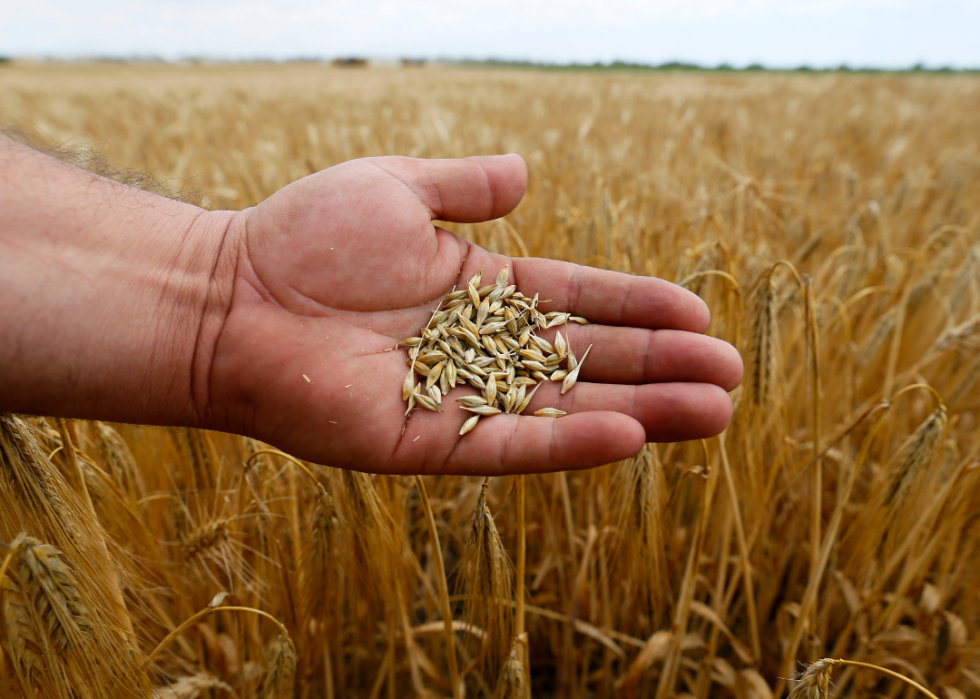
Barley
Barley has been associated with the art of brewing and beer making since ancient Egyptian and Chinese civilizations. It is also used as animal feed and has important human health benefits— it is a vitamin and mineral-rich staple in breads, soups, and porridges.
Ukraine is the second-largest barley exporter worldwide behind Australia. Its biggest barley customers were China and countries in the Middle East and North Africa region. In April 2022, UkrAgroConsult forecast that Ukraine's barley harvest would fall 35%, cutting the country's barley exports in half. Even with this projection appearing overly pessimistic compared to subsequent USDA global harvest forecasts, the Black Sea bottleneck and aluminum can shortage spurred by the conflict are contributing to higher beer costs worldwide.
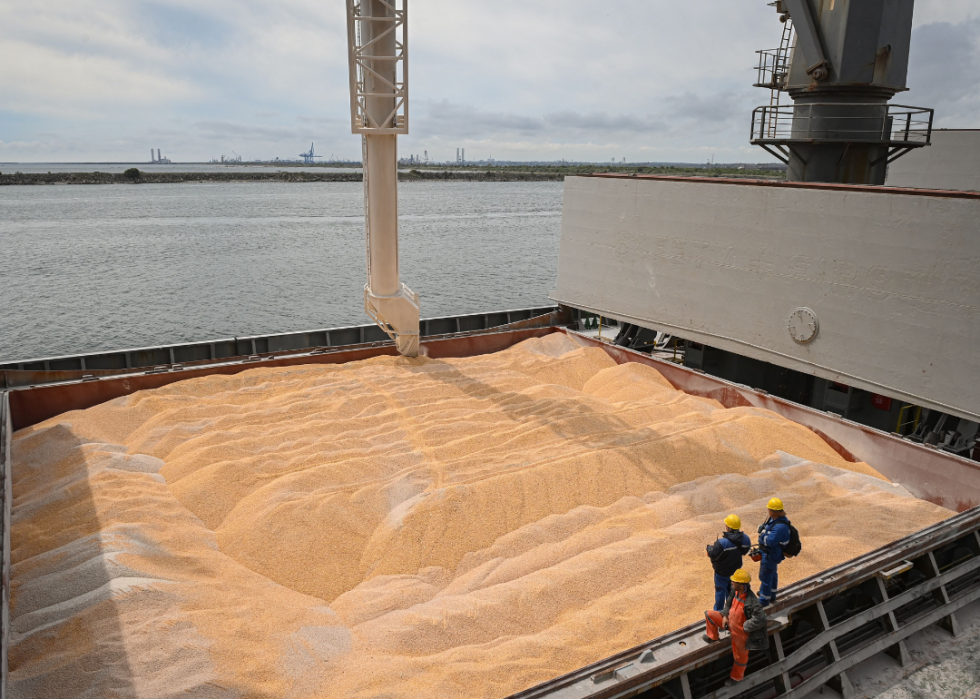
Corn
Earlier in June, the USDA reported that Ukraine's corn harvest has been better than expected at the start of the full-scale, Russia-Ukraine war. However, corn farmers in Ukraine still face the same severe transportation bottlenecks as wheat and barley farmers due to the Black Sea blockade.
In the U.S., over one-third of the crop is used to produce ethanol and other biofuels. With oil prices likely to remain high through the 2024 election cycle, higher corn prices are likely to reignite the decades-old debate over federal ethanol subsidies. A USDA forecast of a robust corn harvest in the U.S. may offer consumers there some relief at the grocery store in an otherwise painful year for worldwide crop yields and food prices.
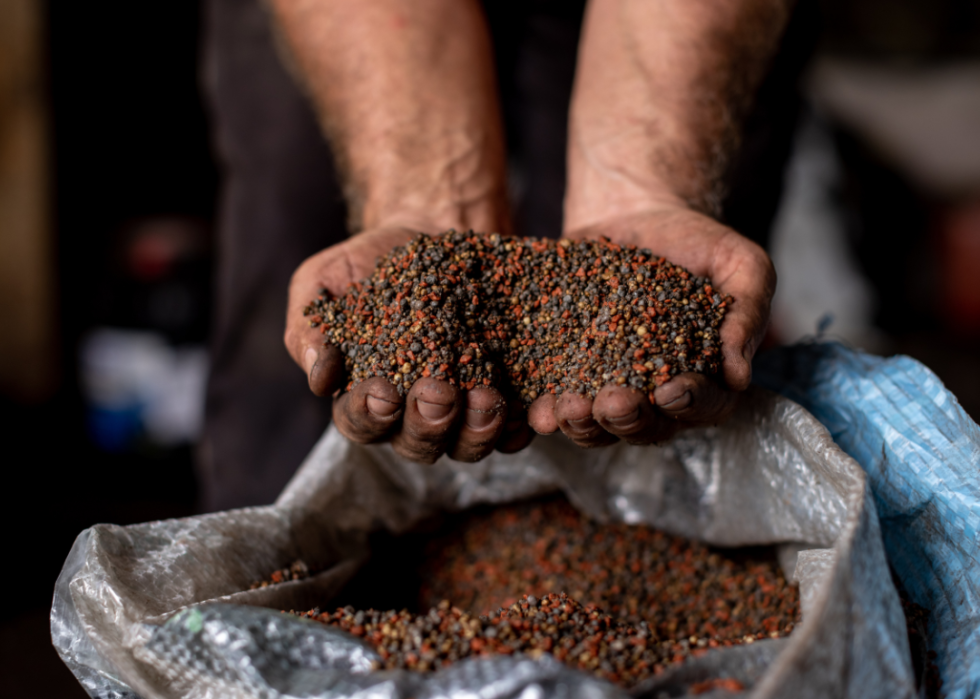
Potash
Ninety percent of global potash output is used in fertilizers, while approximately 10% is used as a preservative in food processing and winemaking. Canada is the largest producer of potash in the world, accounting for nearly 40% of global supplies, but combined, Russia and its ally Belarus produce a similar share. In March 2022, the E.U. sanctioned potash producers and exporters in Belarus for allowing Belarussian territory to be used in the Russian assault on Kyiv. The Financial Times reports that this has led to higher costs for farmers worldwide, with Brazilian farmers suffering record prices above $1,100 a ton for the commodity.
In response, the Biden Administration is weighing a deal with Belarus to waive potash sanctions for six months, according to The Wall Street Journal. In return for a sanctions waiver, Minsk would expedite Ukrainian grain and its own potash shipments through Belarus to E.U. country ports on the Baltic Sea. Any such deal would be highly controversial, particularly in NATO-allied Poland and the Baltic states, who fear that Belarus could be a springboard for Russian attacks on their own territory.

Neon
Most people associate neon with bright lights advertising bars and restaurants. However, the inert gas is also used as a refrigerant and most strategically, in laser lithography for etching computer chips for civilian and military use.
Ukraine accounted for about 70% of the global supply of neon before February 2022, per the MIT Sloan Management Review. According to the U.S. International Trade Commission, the U.S. has imported as much as 90% of its semiconductor neon from Ukraine. Fears of war engulfing Ukraine's neon production contributed to prices shooting up over 600% in the days after Russia annexed Crimea in 2014. Neon and related inert gas prices stabilized, after it was thought that the 2015 Minsk Accords had dampened the Donbas conflict and contained the fighting to the front lines of eastern Ukraine. In June 2022, senior technology analyst Jonas Sundqvist of Techcet told CNN that neon production might never be restored in Mariupol or Odessa, and China will likely be the biggest beneficiary of higher neon prices going forward as it increases its own output.
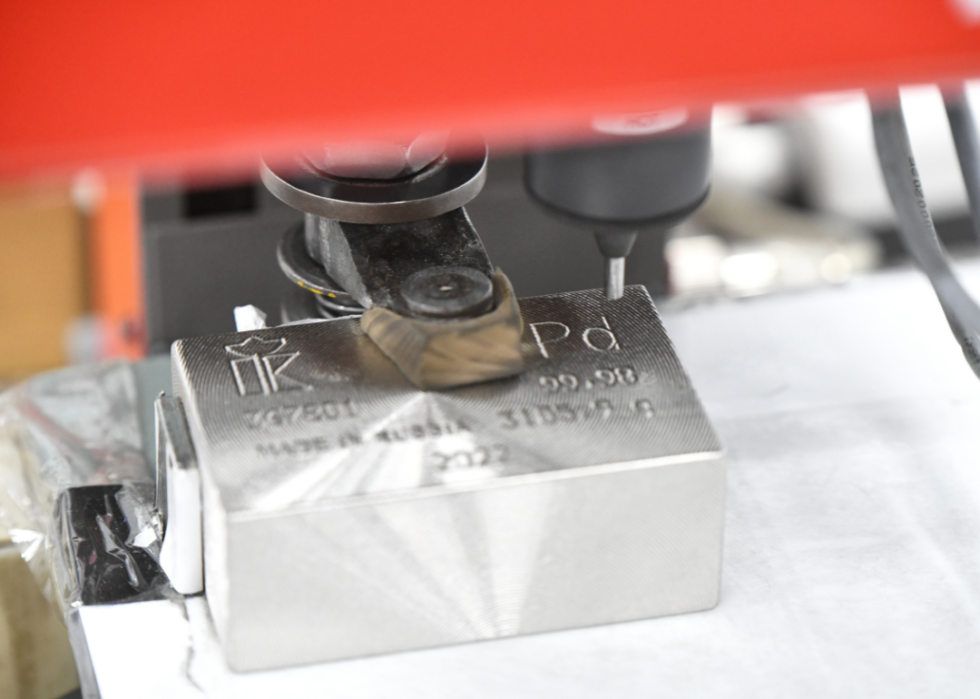
Palladium
Palladium is a precious metal used in cars, particularly catalytic converters. Higher prices fetched on the streets for this commodity have contributed to a recent spike in car thefts in major U.S. cities. Palladium is also used in high-tech sensors and emerging memory (MRAM) with military applications.
According to a February 2022 report by Techcet, Russia supplies approximately one-third of the world's palladium. The Biden administration is reluctant to sanction Russia's palladium exports because of the impact on the global automotive industry, including electric vehicle production, which the administration views as essential to reducing carbon emissions.
In response to the war, the London Platinum and Palladium Market and U.S.-based Nymex owner CME Group removed Russian palladium refiners from their accredited lists this spring. Such unlegislated and voluntary metals trading industry "self-sanctions," as well as a U.K.-imposed tariff, created uncertainty for Russia's leading producer, MMC Norilsk Nickel. But as with crude oil markets, in which Moscow has seen its export revenues increase despite sanctions, it is highly likely Russia could sell its palladium and gold to refiners in preferred partner countries like India and China at a discount—and still produce big profits.
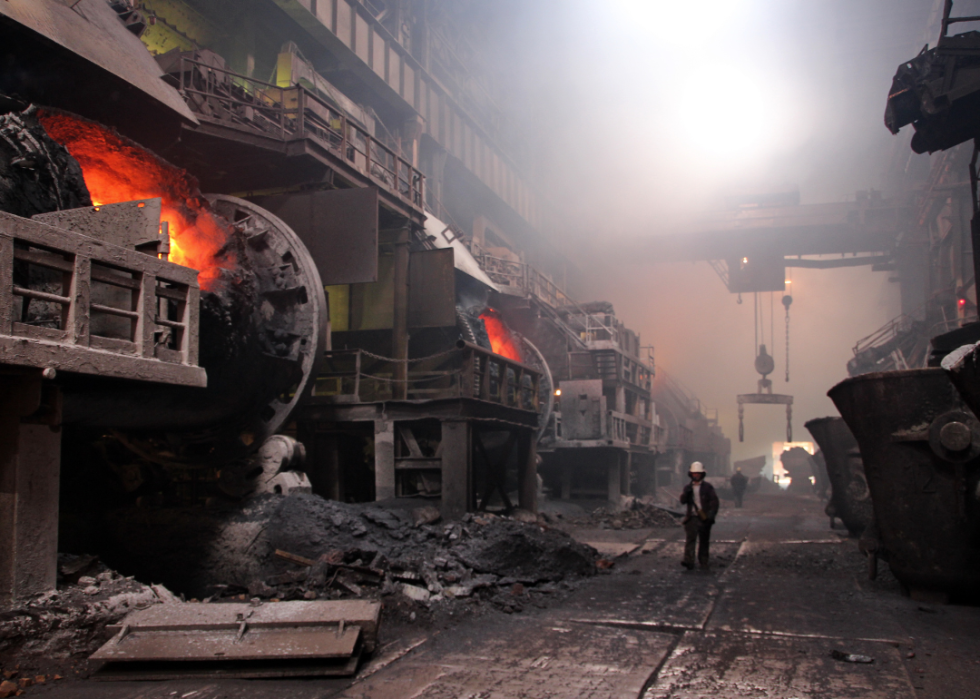
Nickel
Nickel is far from the rarest of metals, but it made headlines when prices briefly spiked to $100,000 a ton on the London Metals Exchange. The LME halted trading amid the panic that nickel supplies from Russia could be cut off or sanctioned. It highlighted the importance of nickel as a strategic commodity for battery manufacturing.
The only operational nickel mine in the U.S., located in Michigan, is scheduled to close in a few years, with one other nickel mine proposed for Minnesota. In the near term, global EV auto-making powerhouse Germany is caught between a rock and a hard place—in addition to the Germans' highly publicized reliance on Russian oil and natural gas, 39% of its nickel supplies come from Russia as of June 2022.
Speaking to the Yale Environment 360, Klaus-Jürgen Jern of the Kiel Institute for World Economy in Germany said, "The impact of a stoppage of major export metal, such as nickel or palladium, would cause an industrial recession in the Western world."
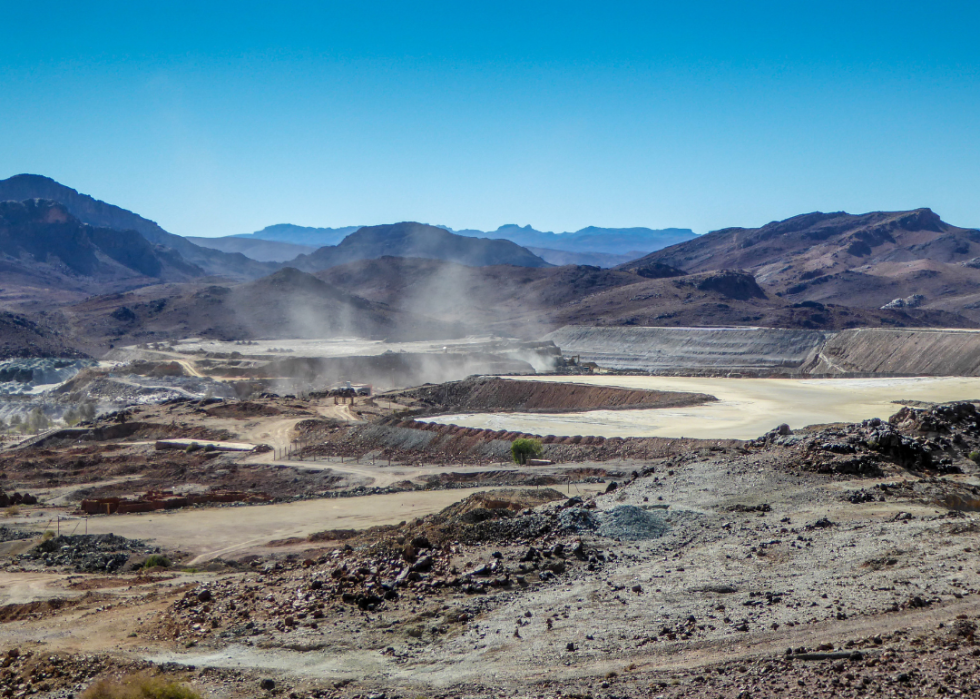
Cobalt
Cobalt is a key mineral used in the production of electric vehicle batteries. As with many global nickel deposits, cobalt comes from open-pit strip mining, with 70% of global supplies mined in the Democratic Republic of Congo as of 2019.
Russia is the second-leading global producer of cobalt, with combined mining giant Norilsk Nickel developing major deposits in the Siberian region of Altai. Moscow announced ambitious plans to mine cobalt from the bottom of the Pacific Ocean. To reduce their reliance on Chinese-refined Congolese and Russian cobalt, the U.S. and its allies have promoted the development of cobalt mining in Australia and Canada.

Titanium
Titanium is stronger and lighter than steel, making it ideal for military and aerospace uses. Titanium is also used in making golf clubs, and it's a nontoxic metal to humans, making it ideal for hip replacement joints and dental implants.
Ironically, to build the famous supersonic SR71 Blackbird which spied on the USSR during the Cold War, the CIA and Lockheed sourced titanium through a series of corporate cutouts from the Soviet Union. Today, Russia's VSMPO-AVISMA claims to be the world's leading titanium supplier, and it supplies 65% of the titanium used in European-conglomerate Airbus airliners. Airbus is also a major defense contractor for the U.S. and its NATO allies.
Such global supply chain complications have thus far exempted titanium from Washington and Brussels' sanctions. Nonetheless, Airbus rival Boeing announced in March 2022 that it would cease importing Russian supplies and buy more titanium from Japan and other friendly countries, according to Bloomberg.



